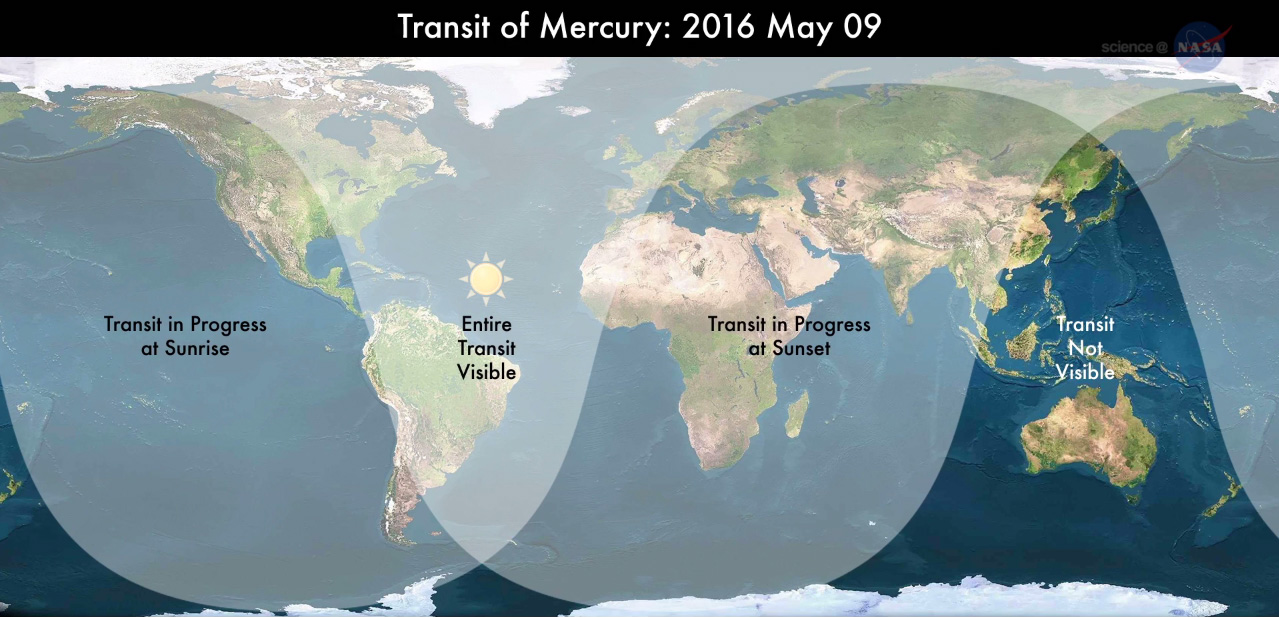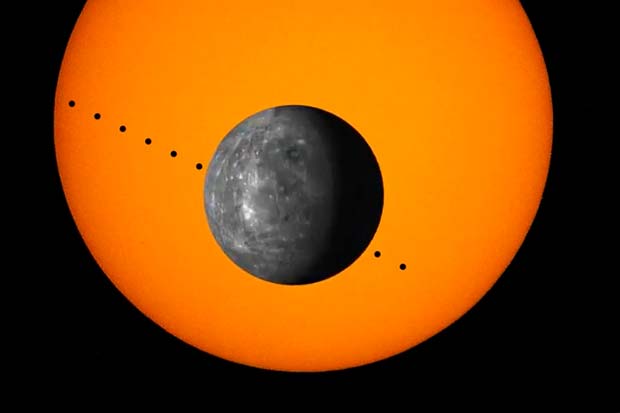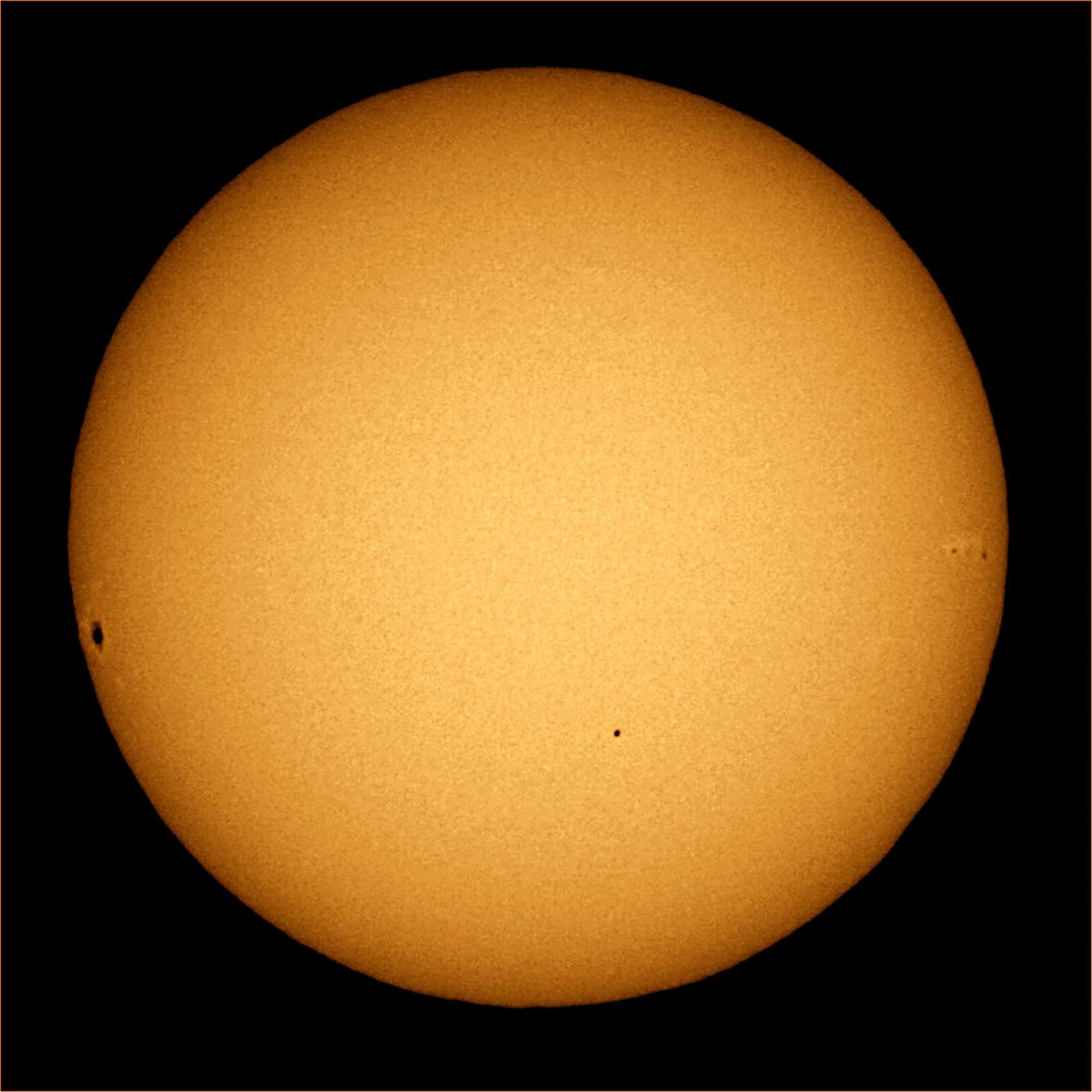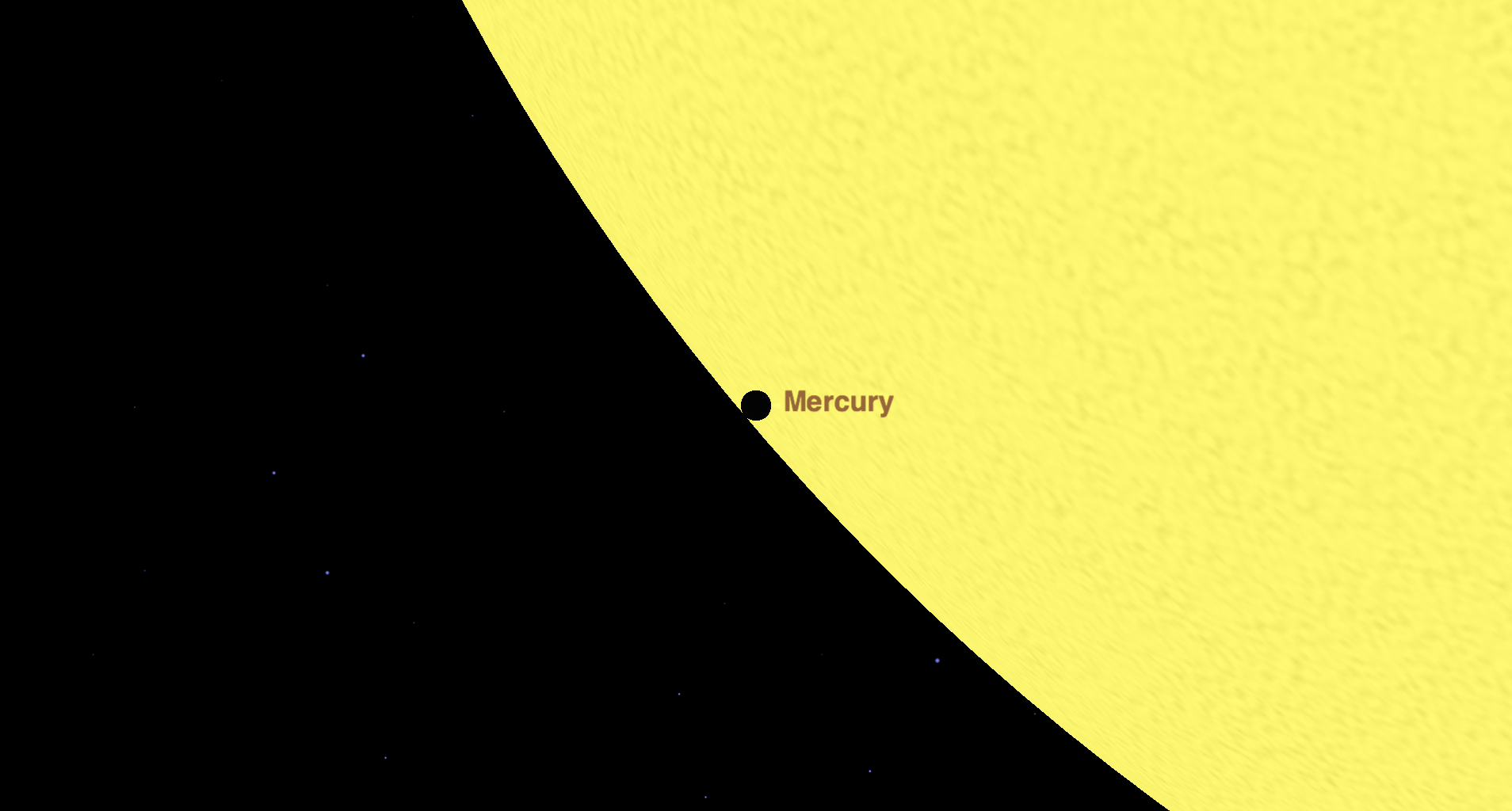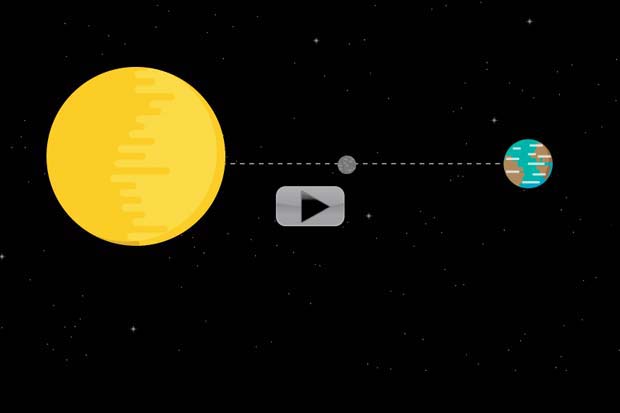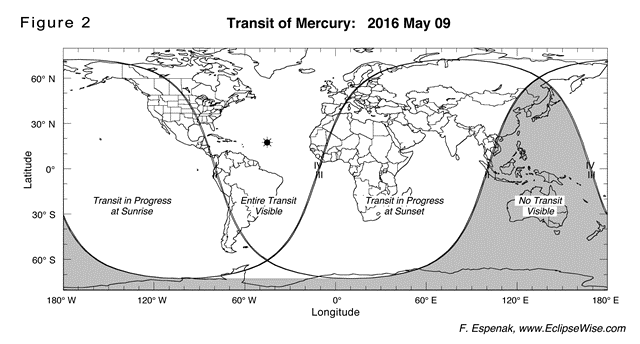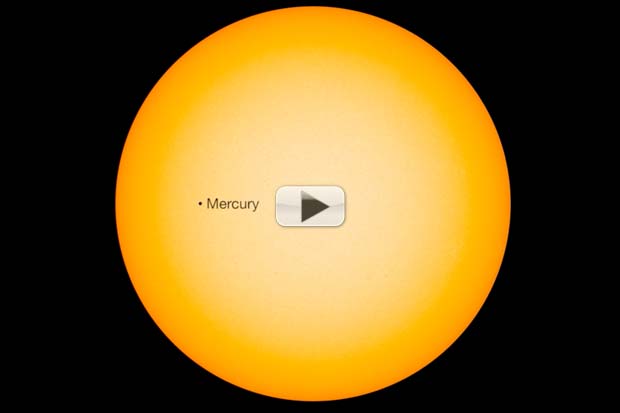The Mercury Transit of 2016 in Amazing Photos
A Transit of Mercury
On May 9, 2016, Mercury will appear to cross the face of the sun, as seen from Earth in a rare solar transit that occurs just 13 times a century. See visibility maps and charts for the 2016 transit of Mercury here. IN THIS IMAGE: This multiple-exposure view shows how Mercury transited across the face of the sun on Nov. 8, 2006 during its last solar crossing. The 2016 Mercury transit occurs on May 9. See our Complete Coverage of the Mercury Transit of 2016
A Day-Long Transit
It will take Mercury just over seven hours to complete its transit across the sun's face. The timing of the May 9 transit is shown in this NASA graphic. See our Complete Coverage of the Mercury Transit of 2016
The View from Earth
The 2016 Transit of Mercury will be visible from most places on Earth, but not all regions. Sorry viewers in Australia and Antarctica, it looks like you're out of luck to see it firsthand. But there's always webcasts! See our Complete Coverage of the Mercury Transit of 2016
Mercury Transit 2016 Explained (Infographic)
On May 9, 2016, Mercury crosses the face of the sun in a solar transit. See how Mercury transits work in our full infographic here.
Mercury Transit - What You And NASA Needs To Know | Video
The NASA video here explains the 2016 Mercury Transit in all its glory. The planet is too small to be seen without a telescope (Caution! Do NOT attempt to observe the sun without appropriate eye protection). See our Complete Coverage of the Mercury Transit of 2016
November 2006 Transit of Mercury
Here's another snapshot of the November 2006 transit of Mercury. The rocky planet appears as a clean-edged disc in the lower hemisphere of the sun. Clusters of sunspots can also be seen near the right and left edges of the sun. See our Complete Coverage of the Mercury Transit of 2016
The Black Drop
At 7:09 a.m. EDT on May 9, Mercury will be just inside the limb of the sun; notice the "black drop" effect. Mercury may appear to "drip" away from the sun's edge, but this so-called "black drop" effect is just an optical illusion. See our Complete Coverage of the Mercury Transit of 2016
Breaking space news, the latest updates on rocket launches, skywatching events and more!
A Rare Sight
This great video from Europlanet highlights the rarity of the 2016 Mercury transit, and includes tips on how to observe the event safely. See our Complete Coverage of the Mercury Transit of 2016
2016 Mercury Transit Visibility
Here's another handy chart laying out the visibility areas on Earth for the May 9, 2016 Mercury transit. See our Complete Coverage of the Mercury Transit of 2016
Mercury and Mars in the Spotlight
As this NASA video explains, Mercury isn't the only planet in the solar system to command attention in May. If the Mercury transit isn't enough for you, find out how to see Mars in the night sky this month here. See our Complete Coverage of the Mercury Transit of 2016

Tariq is the award-winning Editor-in-Chief of Space.com and joined the team in 2001. He covers human spaceflight, as well as skywatching and entertainment. He became Space.com's Editor-in-Chief in 2019. Before joining Space.com, Tariq was a staff reporter for The Los Angeles Times covering education and city beats in La Habra, Fullerton and Huntington Beach. He's a recipient of the 2022 Harry Kolcum Award for excellence in space reporting and the 2025 Space Pioneer Award from the National Space Society. He is an Eagle Scout and Space Camp alum with journalism degrees from the USC and NYU. You can find Tariq at Space.com and as the co-host to the This Week In Space podcast on the TWiT network. To see his latest project, you can follow Tariq on Twitter @tariqjmalik.


